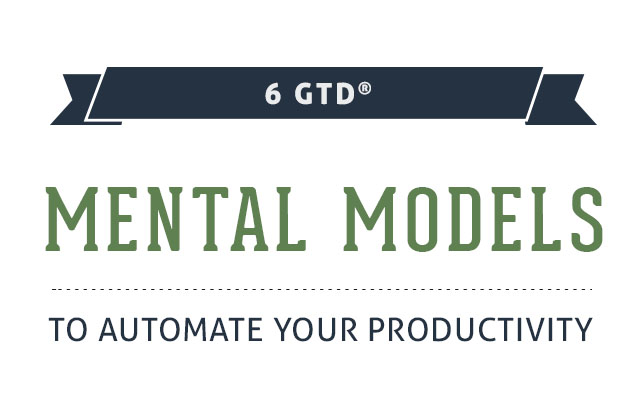Search for “how to increase productivity” on Google, and you’ll get a laundry list of different ways to be more productive
What you need is not new tips and tricks, but new ways of thinking about work.
Once you change the way you look at the world, you’ll automatically start implementing the best practices.
The beauty of practicing GTD is you get more than a system for stress-free productivity. You get a new set of mental models on how you engage with your work.
And by applying them, you supercharge your productivity. Here are 6 Mental Models from the GTD practice:
1. Actionables & Non-Actionables Don’t Mix
Much like oil and water.
Items that you have to take a defined action on to make progress should never be on the same list of items that you don’t have a commitment towards.
Actionables require you to think a certain way. They demand an investment of mental bandwidth and energy.
Dumping them on the same task list or in the same in-tray or even the same project file as non-actionables causes attention leak.
Why invite a passive item that should not be on your radar to create unwanted noise and take you away from the tasks that do call for your participation?
2. Next Actions are Non-Negotiable
A journey of a thousand miles starts with that first step.
Unless you can take it, you can’t really reach your destination.
The same concept applies to to-do lists and projects.
But first – what is a project?
A project is any undertaking that has a start and a finish, and requires the execution of more than one task to complete.
The mistake most of us make is we add projects to to-do lists and don’t understand why we can’t move forward on them.
When we look at something ambiguous like “Income Tax Return”, our brain can’t comprehend what it needs to do next to get to the desired outcome.
And the result is procrastination.
The practice of asking “What is the Next Action?” for any item on our to-do list does two things:
- It helps us identify projects (which need a list of their own)
- It helps us identify the simplest thing we can do to make progress on the task
3. See the Outcome First
This is related to the second mental model.
And may sound counter-intuitive.
But the good news is that the human brain is wired to think this way.
It is logic that says planning needs to come first.
Adept GTD practitioners have a list of Next Actions. The really seasoned ones have a list of projects paired with the “successful outcome” for each.
A successful outcome is the end vision that the project strives to achieve. What would flawless execution look (and feel) like?
When you define the outcome first, you:
- Know exactly what’s at stake and reduce instances of procrastination even further.
- Can prioritize incoming tasks efficiently and effectively because you know the stakes.
- Sync up your team and get everyone on the same page in chaotic group projects.
4. The 2- Minute Rule
As simple as it sounds.
There is a place for planning, and there is a place for action.
If the completion of a Next Action will take two minutes, or less – do it right away.
Don’t bother writing it down. Don’t bother creating open loops.
Just execute.
5. Batching Beats Context Switching
Multi-tasking between devices is directly related to poorer memory and attention.
Multi-tasking may sound like a time-saver, but it is not worth the trouble your brain has to go through to switch gears from thinking in one way to another.
It simply depletes your reserves of focus.
Getting Things Done® respects this truth about human productivity. This is why it has batching built into its workflows.
Batching is the technique of grouping together similar tasks so that they can be executed one after the other, without switching devices or context.
Make it a habit to organize your Next Actions into contextualized lists. You can create one for every setting of your life – one for the computer (@Computer), one for the office (@Office), one for home (@Home).
Armed with these lists of trusted choices (clarified Next Actions), you are sure to always:
- Execute something worthwhile
- Make the most of the resources available in a particular setting
6. Re-Prioritize. Don’t Deprioritize.
The hallmark of overwhelm is either completely ignoring new, incoming information. Or obsessing over the latest and the loudest.
Both behaviors can be traced back to an inability to understand the stakes involved with executing (or not executing) a task and thus an inability to prioritize.
Building on the foundation of the 5 mental models discussed so far, here is a sixth one that helps GTD® practitioners invest resources in the best opportunities.
Re-prioritize. Don’t deprioritize.
Your priorities list should not be rigid. It is meant to be constantly evolving.
As new data and possibilities register on your radar, clarify these inputs and then revise your priorities accordingly based on what will best serve your goals.
This is the most objective way to stay on task, handle surprises and make the right decision in every circumstance.
Do you have any mental models that are meant to take you out of the unconscious, auto-pilot mode of navigating work?
Share it in the comments below.
I believe our work should be an expression of our most creative selves. I work with business owners and their teams to achieve stress-free productivity.

